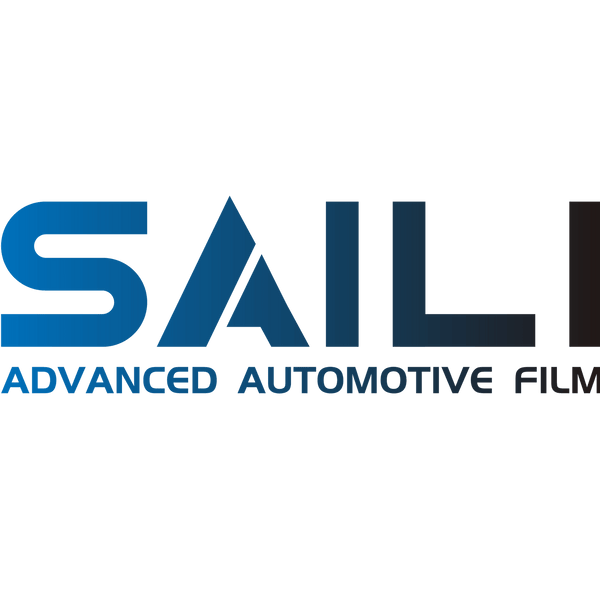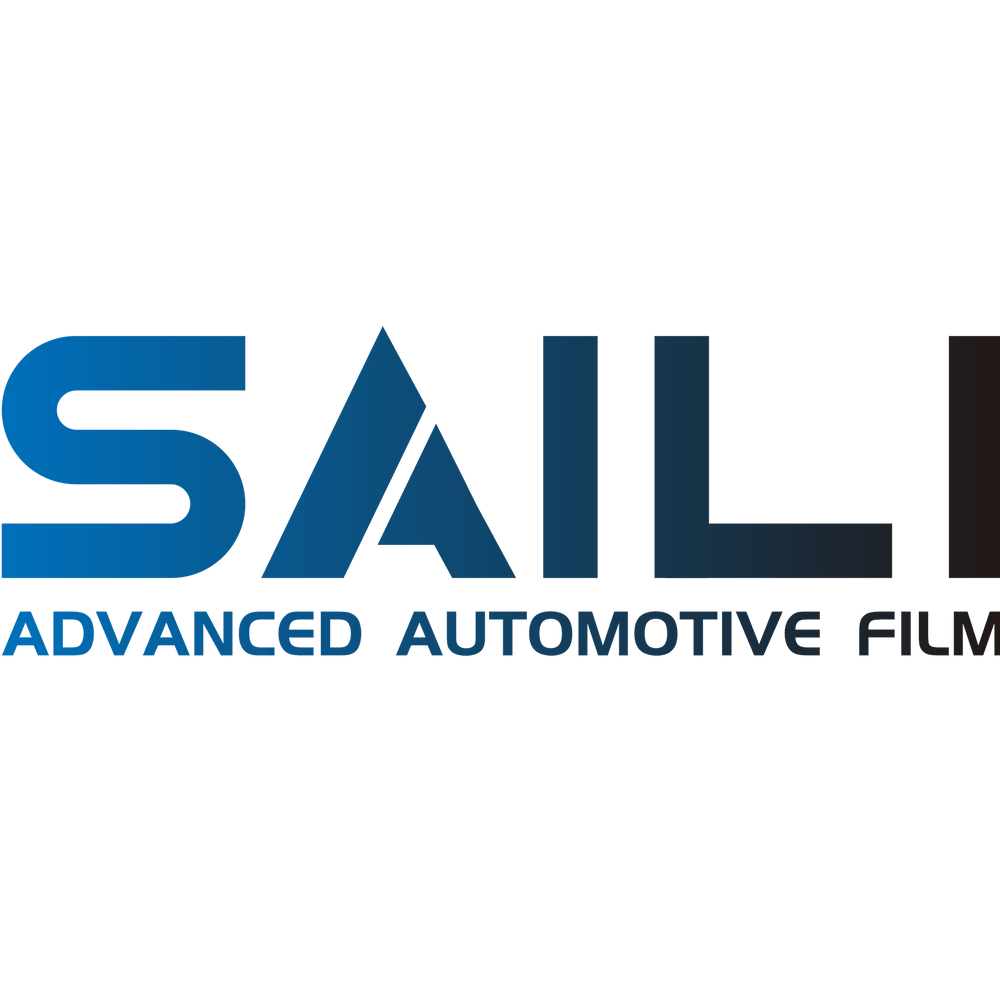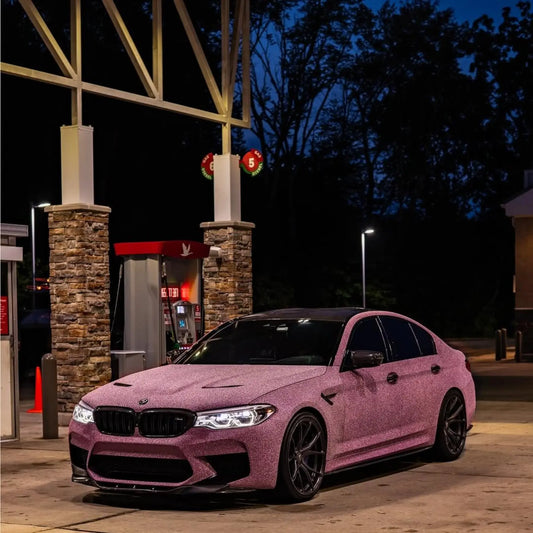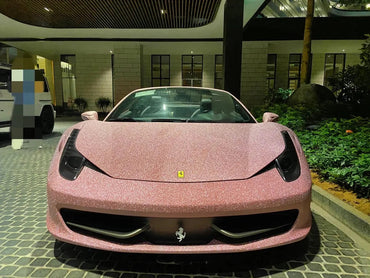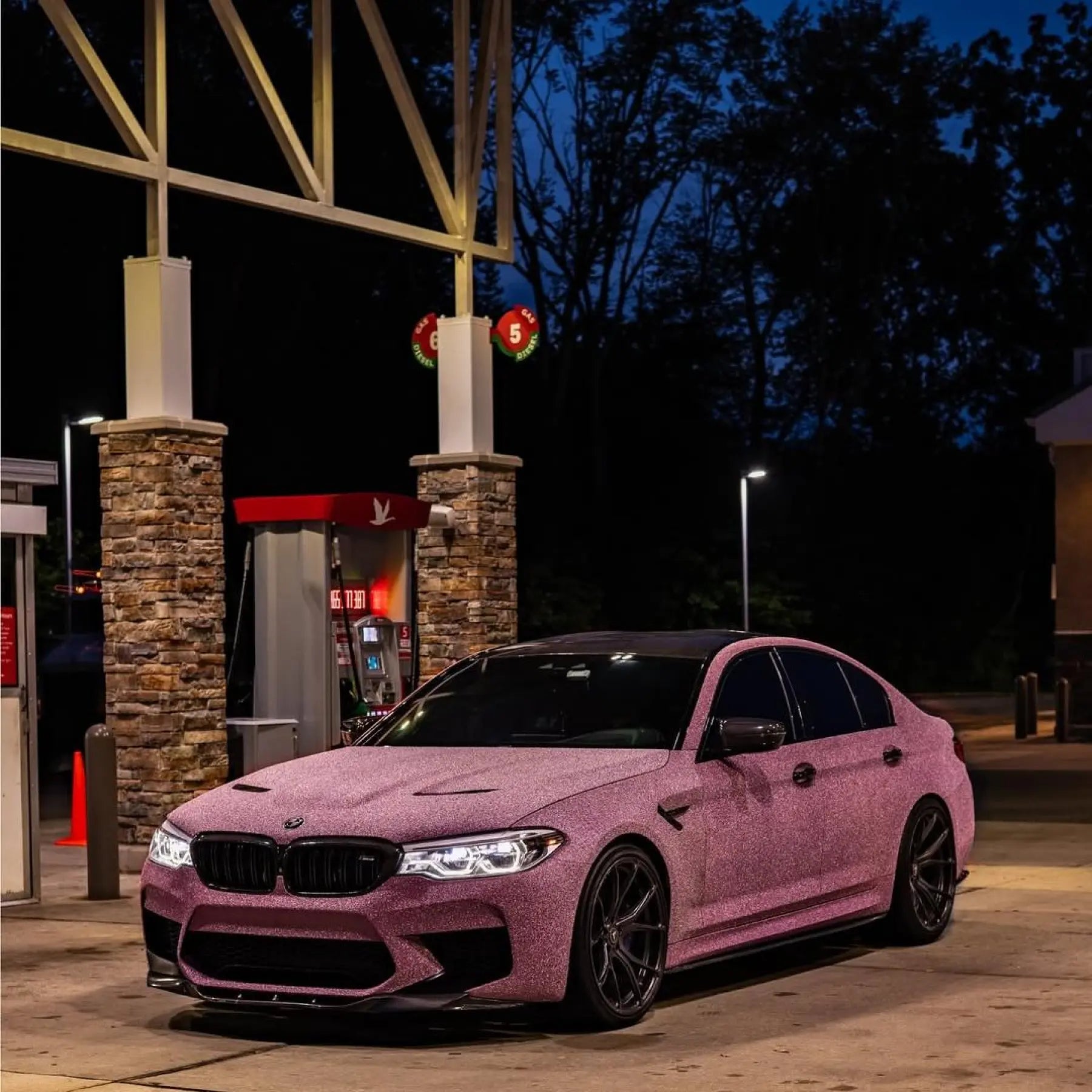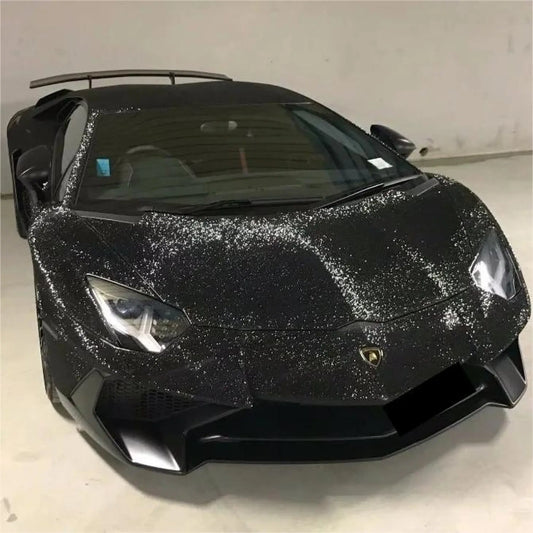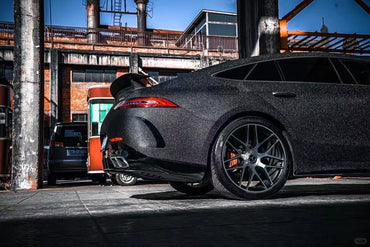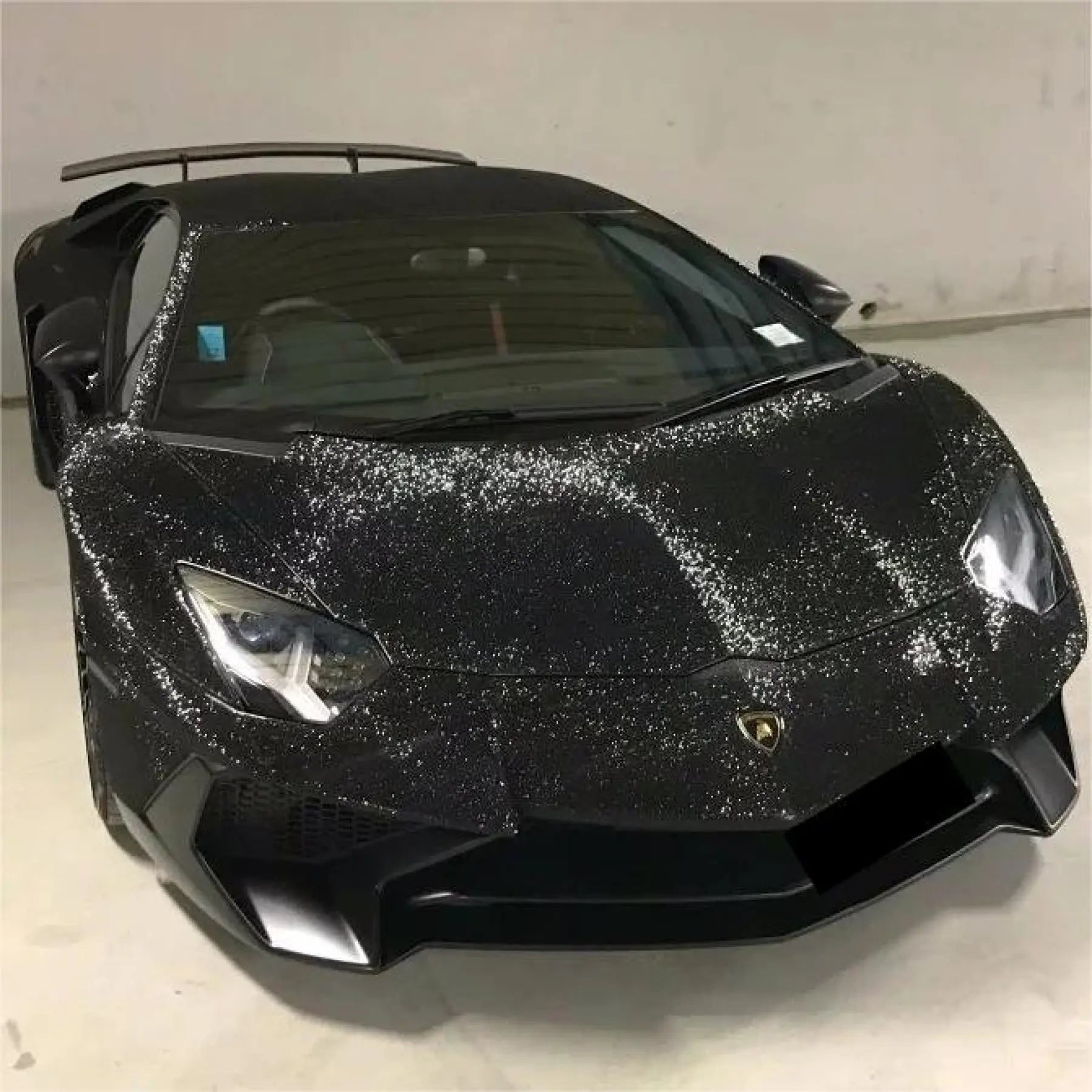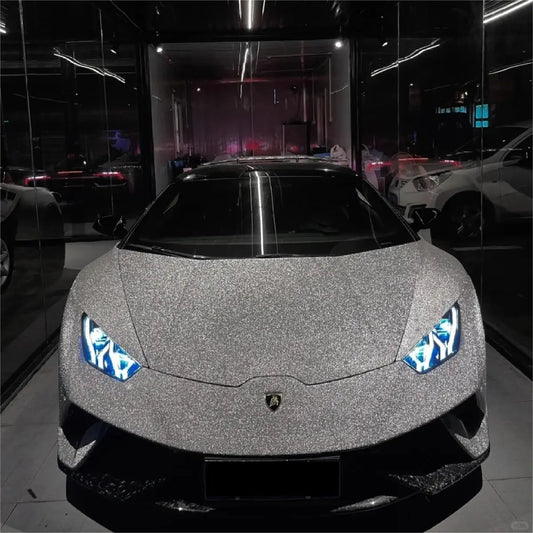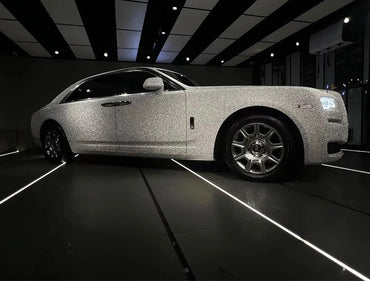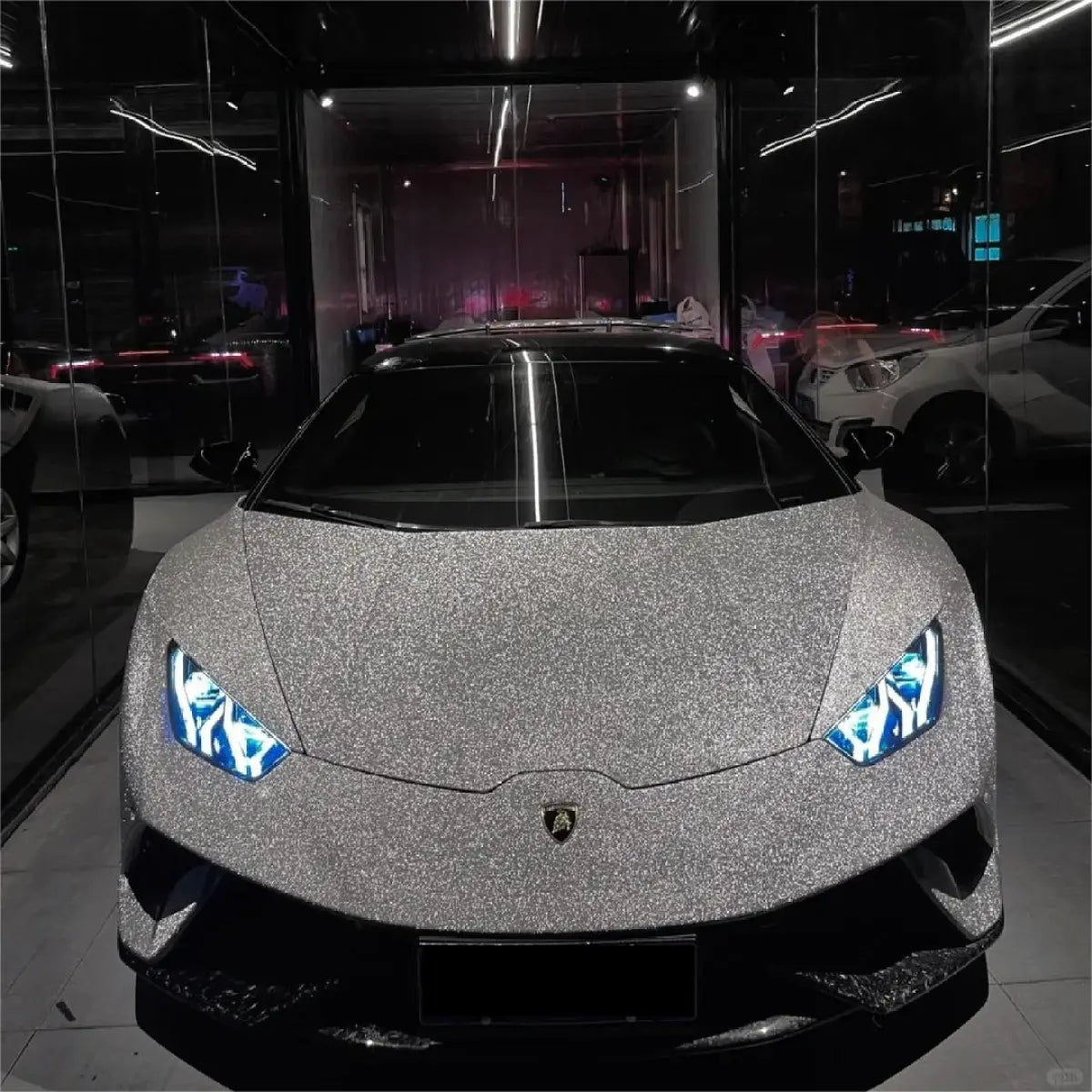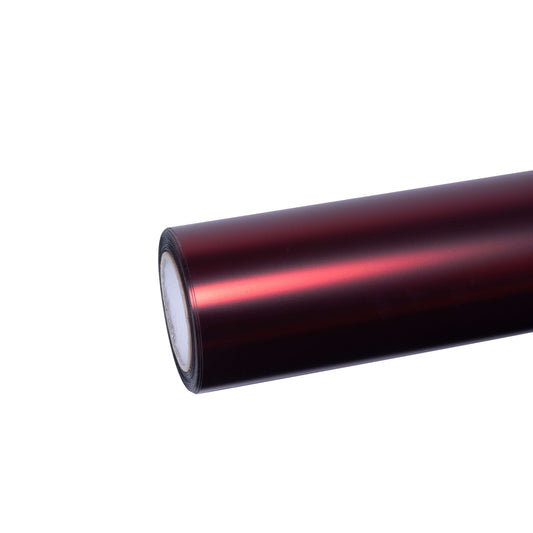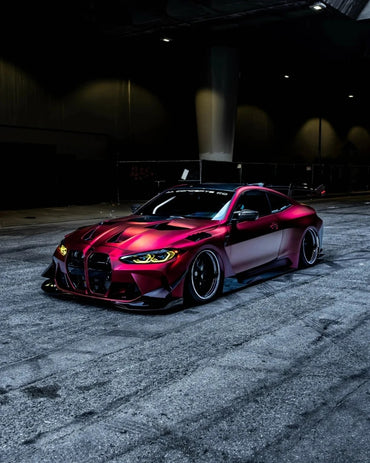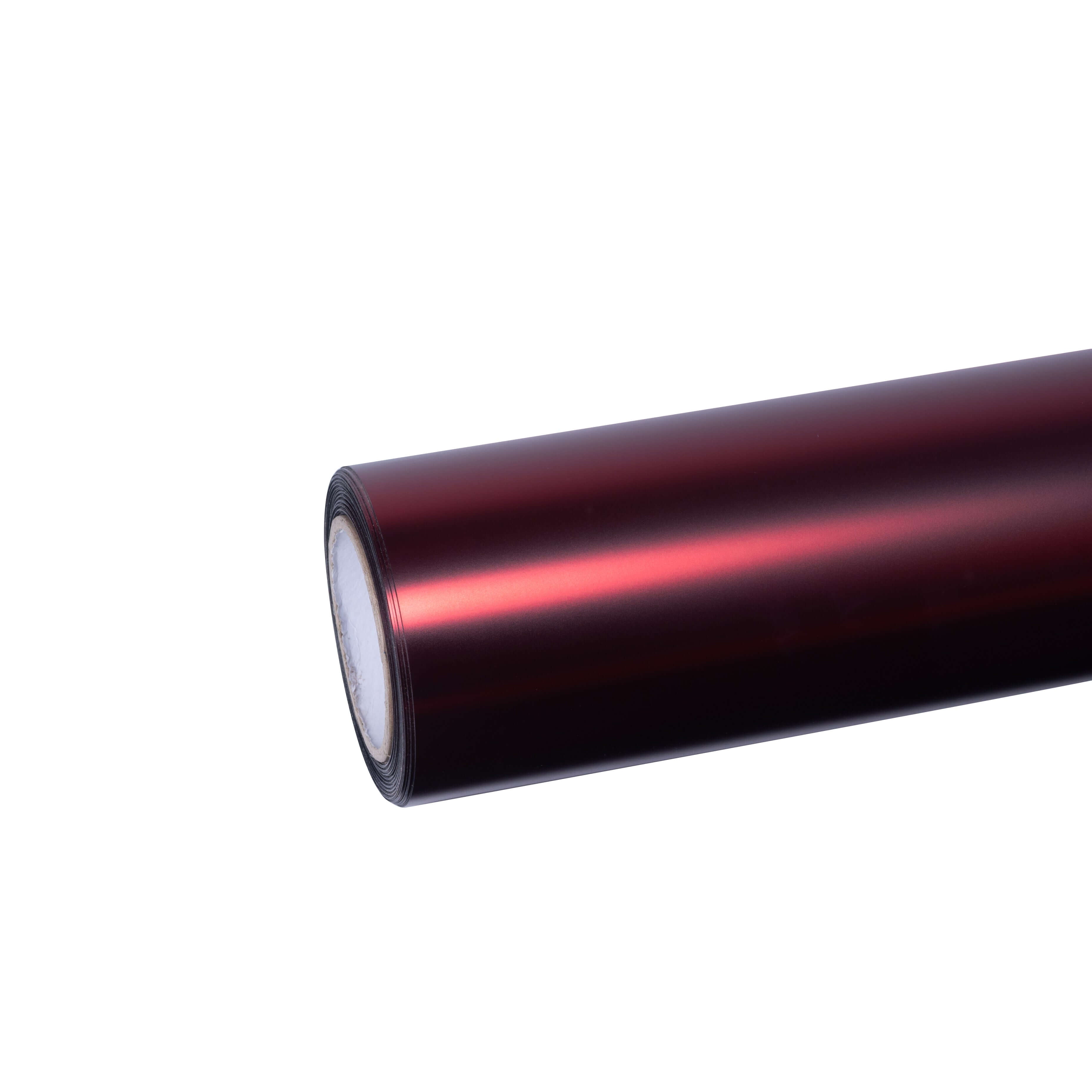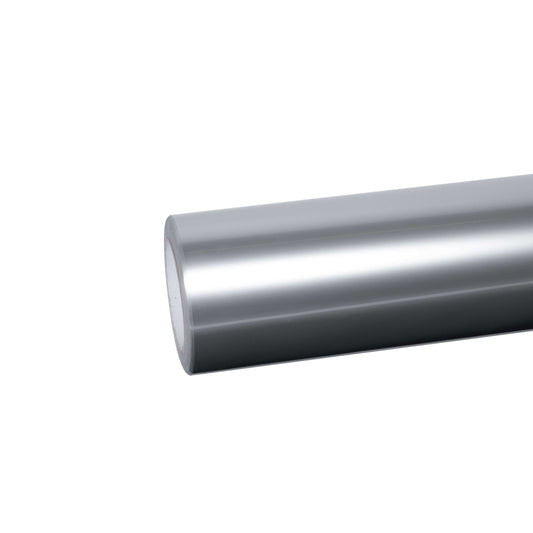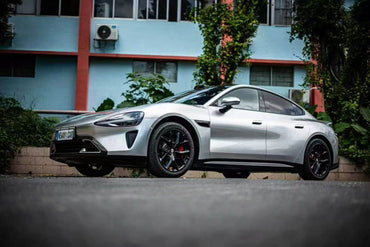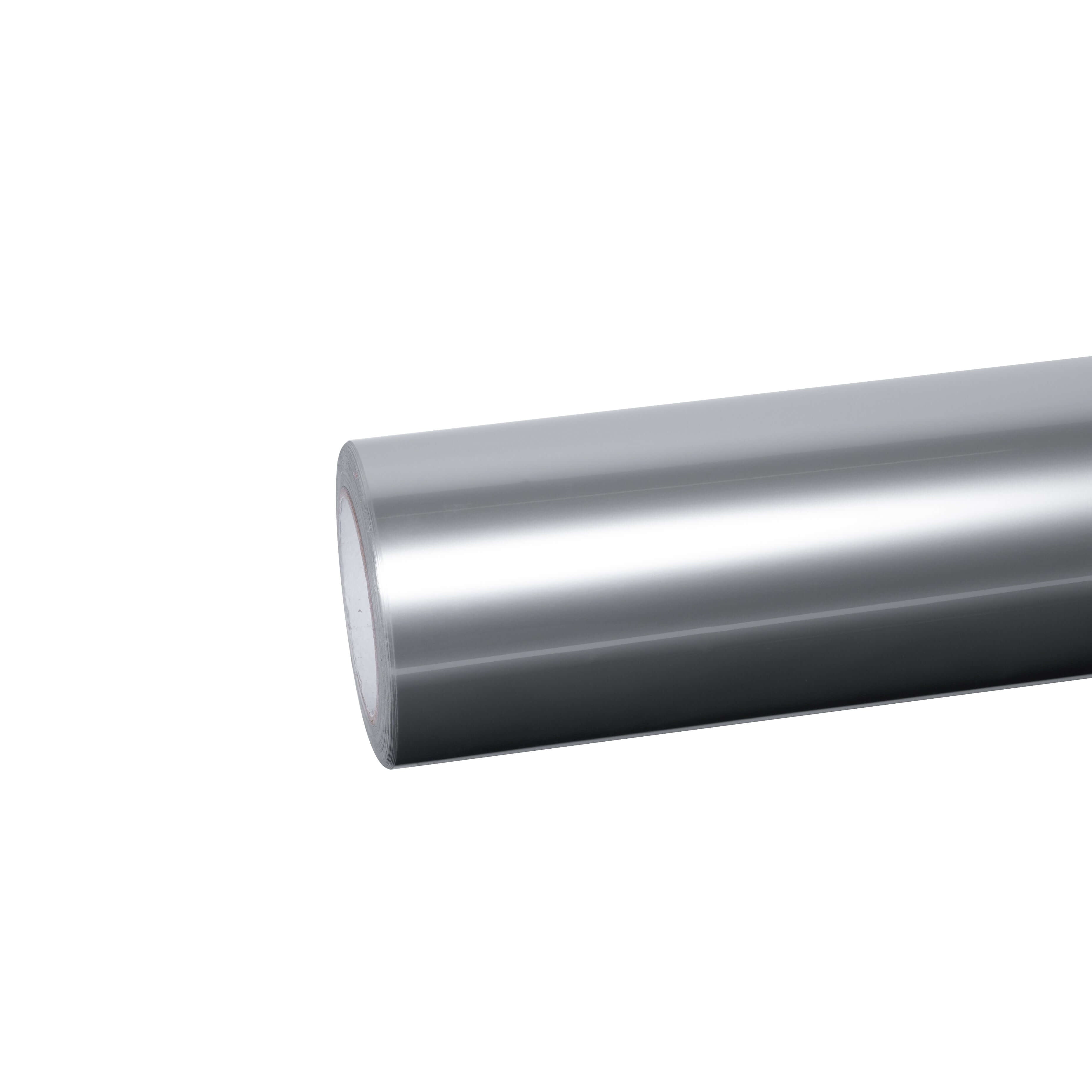Understanding Self-Healing Paint Protection Film: The Technology Behind the Innovation
Self-healing paint protection film (PPF) has emerged as the gold standard for vehicle protection in 2024-2025. Unlike conventional vinyl wraps, which remain static after installation, TPU-based paint protection films actively repair themselves when exposed to heat. This revolutionary polymer technology uses thermoplastic urethane resins that respond to environmental conditions, making minor scratches, swirl marks, and scuffs disappear completely.
The self-healing mechanism operates through a molecular recovery process. When your vehicle experiences minor surface damage—like the fine scratches from automated car washes or light road debris—the polyurethane material softens under heat exposure (typically from sunlight or warm conditions). This allows the film's molecular structure to realign, effectively erasing the damage within hours or days. It's a "invisible shield" that continuously works to maintain your vehicle's showroom appearance.
Sailifilm's TPU paint protection wrap collection features premium-grade thermoplastic urethane films engineered specifically for maximum self-healing performance. Our colored PPF options deliver dual benefits: comprehensive protection combined with aesthetic transformation.
Why Self-Healing PPF Outperforms Traditional Vinyl Wraps
Many vehicle owners ask: "What's the difference between paint protection film and vinyl wraps?" This is a crucial distinction that impacts your long-term vehicle care strategy.
Paint protection films represent a paradigm shift from traditional vinyl solutions. Here's why:
Thickness and Durability: Self-healing PPF typically measures 6.5 to 9.5 millimeters thick—substantially more robust than standard vinyl wraps. This increased thickness allows PPF to withstand rock chips, road debris impact, and environmental hazards that would puncture regular vinyl materials.
Self-Healing Properties: Only premium paint protection films possess genuine self-healing technology. Standard vinyl wraps, regardless of quality, cannot repair themselves when damaged. Once torn or scratched, vinyl requires replacement or repair patches.
Hydrophobic and Stain-Resistant Coatings: Top-tier PPF includes hydrophobic topcoats that cause water to bead and roll away from the surface. This property prevents mineral deposits, water spots, and contamination from adhering to your vehicle's exterior. Bird droppings, tree sap, and acid rain slide off rather than etching into the finish.
Optical Clarity and Color Preservation: Self-healing paint protection maintains complete transparency (for clear PPF) or accurate color representation (for tinted variants) without yellowing over time. UV-resistant compounds prevent degradation that commonly affects vinyl wraps after 3-5 years.
Impact Protection: PPF absorbs energy from rock chips and road debris, preventing deep gouges that compromise the underlying paint. This protection directly preserves your vehicle's resale value—dealerships and private buyers command premium prices for vehicles with documented paint protection histories.
The Science of TPU Paint Protection: How Sailifilm Engineered Superior Performance
Understanding the chemistry behind self-healing paint protection film helps explain why Sailifilm's offerings represent the industry's premium tier. TPU (thermoplastic polyurethane) resins form the foundation of effective paint protection systems.
Our colored paint protection film utilizes USA-sourced TPU formulations combined with advanced acrylic adhesives. This engineering produces several tangible benefits:
Molecular Memory: TPU's inherent polymer structure possesses "molecular memory"—an ability to remember its original form. When microscopic damage occurs, the film's molecular chains redistribute themselves under minimal heat, effectively erasing surface imperfections.
Superior Adhesion: Unlike cheaper alternatives, Sailifilm's premium-grade acrylic adhesive creates permanent bonds with automotive clear coat. This eliminates edge lifting, delamination, and the deterioration common with budget options.
Self-Healing Speed: Temperature-responsive polymers in Sailifilm's formulation activate at standard environmental temperatures. Minor scratches typically disappear within 24-72 hours of heat exposure, significantly faster than competitor products.
Long-Term Color Stability: Our colored PPF maintains factory-accurate finishes for 7-10 years without fading, discoloration, or orange-peel effects.
Comprehensive Vehicle Protection: Beyond Simple Scratch Resistance
Self-healing paint protection film addresses every environmental threat your vehicle encounters. This comprehensive protection strategy explains why automotive professionals and luxury vehicle owners prioritize PPF installation.
Rock Chip and Impact Protection: High-speed road debris generates tremendous impact force. PPF absorbs this energy, preventing the deep gouges that expose bare metal beneath clear coat. This single benefit justifies the investment for vehicles subjected to highway driving.
UV Ray Shielding: Ultraviolet radiation causes permanent paint oxidation, fading, and chalky finishes. Sailifilm's premium paint protection materials incorporate UV-filtering compounds that reduce sun damage by 99%, maintaining your vehicle's vibrant appearance for years.
Chemical Contamination Resistance: Environmental hazards—bird droppings containing acidic compounds, tree sap with corrosive enzymes, industrial fallout—permanently etch automotive paint. PPF creates a sacrificial barrier, absorbing these contaminants while preserving underlying finish.
Acid Rain Protection: In regions experiencing acid precipitation, paint degradation accelerates dramatically. Self-healing paint protection film prevents acid from contacting clear coat, effectively eliminating this threat.
Water Spot and Mineral Deposit Prevention: Hydrophobic topcoats cause water to bead rather than dry in spots. This property prevents the mineral-laden deposits that create permanent etching and cloudiness.
Aesthetic Customization Meets Functional Protection: Sailifilm's Colored PPF Innovation
Traditional paint protection has meant accepting a clear, invisible option. Sailifilm revolutionized this limitation by introducing colored paint protection films that combine style with substance.
Our gloss and colored PPF collections feature stunning options including Crystal Sky Blue, Ferrari Red, Arctic Grey, and Piano Black finishes. These aren't cosmetic additions—they represent genuine protective barriers with all self-healing benefits intact.
Colored PPF transforms vehicle aesthetics while delivering:
- Complete color change without repainting
- Protection equivalent to clear PPF options
- Self-healing and hydrophobic properties throughout
- Resale value enhancement through protective preservation
- Design personalization impossible with traditional clear films
Vehicle owners can now achieve dramatic transformations—matte finishes, metallic effects, or bold color statements—while maintaining superior paint protection.
Installation and Longevity: What to Expect From Premium Paint Protection
Professional installation remains critical for optimal PPF performance. While some automotive enthusiasts attempt DIY application, precision installation directly impacts protection effectiveness and self-healing capability.
Professional Installation Process: Experienced technicians carefully prepare vehicle surfaces, measure and cut panels with precision, and apply film under controlled conditions. This process typically requires 8-12 hours for full-vehicle coverage.
Post-Installation Care: After installation, avoid washing or rain exposure for 48 hours while adhesive fully cures. This brief curing period ensures maximum bonding strength between film and clear coat.
Long-Term Maintenance: Self-healing PPF requires minimal maintenance beyond standard car washing. Hydrophobic topcoats make cleaning easier—dirt and contaminants release readily without abrasive scrubbing.
Expected Lifespan: Premium paint protection film from Sailifilm's collection maintains protective properties for 7-10 years. Some formulations exceed this duration, with user reports indicating films protecting vehicles throughout ownership transitions.
Partial vs. Full Coverage: Complete vehicle wrapping in PPF offers maximum protection; however, partial coverage protecting high-impact areas (front bumpers, hood, fenders) provides practical protection at reduced investment. Many owners implement this strategy initially, upgrading to full coverage later.
Comparing Paint Protection Film Technologies: Making Informed Decisions
The paint protection film market includes various formulations, each offering different performance characteristics. Understanding these distinctions helps identify the solution matching your specific needs.
Clear vs. Colored PPF: Clear film provides invisible protection maintaining original paint appearance; colored options deliver aesthetic transformation alongside protection. Sailifilm offers both, allowing selection based on personal preferences.
Thickness Variations: Films range from 6.5 to 9.5 millimeters. Thicker formulations provide enhanced impact resistance at increased cost; thinner versions balance protection with subtlety and cost-effectiveness.
Gloss, Matte, and Specialty Finishes: Sailifilm's ultra-matte wrap and metallic vinyl wrap options address diverse aesthetic preferences while maintaining functional protection capabilities.
Self-Healing Response Times: Premium formulations achieve self-healing within 24-72 hours; budget alternatives may require significantly longer periods or higher heat exposure.
Sailifilm's Advanced Paint Protection Collections: Premium Options for Every Vehicle Owner
Sailifilm has engineered comprehensive protection solutions addressing every automotive need and aesthetic preference:
Rainbow Laser Vinyl Wrap Collection: Featuring Galaxy Chameleon, Pearlescent Sparkle, and Aurora Metallic options, these films deliver mesmerizing color-shifting effects while maintaining core protection properties.
Dual-Color Dream Vinyl Wrap: Sophisticated two-tone designs providing striking visual impact combined with full protective capabilities.
Liquid Chrome Wrap: Premium reflective finishes delivering futuristic appearance with complete self-healing and hydrophobic protection.
3D Carbon Fiber Wrap: Authentic-appearance carbon texture film combining motorsport aesthetics with practical protection.
Crystal and Glitter Sparkle Options: Eye-catching sparkle effects that maintain clarity and self-healing properties.
Professional Wrapping Tools: Sailifilm provides installation tools ensuring professional-quality results whether using professional installers or DIY approaches.
The Investment Perspective: Long-Term Value of Self-Healing Paint Protection
Vehicle protection represents one of the most cost-effective investments available to car owners. Here's the financial reality:
Resale Value Preservation: Vehicles protected with PPF command 3-5% higher resale prices compared to unprotected equivalents. This premium directly offsets film installation costs.
Prevention of Expensive Paint Corrections: Without protection, rock chips, swirl marks, and scratches require professional correction—typically $300-$1,500 per incident. Self-healing PPF eliminates or dramatically reduces these expenses.
Elimination of Repainting Costs: Extensive paint damage on unprotected vehicles costs $2,000-$5,000+ for professional repainting. PPF prevents this scenario entirely.
Insurance Implications: Some comprehensive auto insurance policies recognize PPF installation and offer discounts. Additional savings emerge through reduced accident-related claims.
Time Value: The hours spent protecting vehicles through self-healing PPF technology translates directly to dollars—time not spent addressing paint damage, washing damaged areas, or correcting deterioration.
External Resources for Further Learning
For comprehensive vehicle care information, explore these authoritative references:
- Wikipedia: Automotive Paint - Understanding paint science and protective technologies
- Road and Track: Paint Protection Guide - Professional automotive publication guidance
- Consumer Reports Vehicle Protection Reviews - Independent testing and recommendations
- National Automotive Research Council - Federal resources on vehicle safety and protection
Future-Proofing Your Vehicle: Final Considerations
As automotive technology evolves, self-healing paint protection film continues advancing. New formulations enhance self-healing speed, durability, and aesthetic options. Early adopters benefit from premium protection as their vehicles maintain showroom conditions for extended periods.
Sailifilm's commitment to innovation ensures access to the latest protective technologies. Whether seeking traditional clear protection, bold color transformation, or specialized effects like liquid chrome or carbon fiber, Sailifilm's comprehensive catalog delivers premium solutions addressing every vehicle protection need.
The choice is clear: Self-healing paint protection film represents the intelligent approach to vehicle ownership, combining practical protection with aesthetic enhancement. Your vehicle deserves more than passive defense—it deserves proactive, intelligent protection that continuously works to maintain its appearance and value.
- Professional vs. DIY Paint Protection Film Installation: Which Approach Protects Better?
Maintaining Your Colored Paint Protection Film: Cleaning and Care Guide
The Complete Comparison: Paint Protection Film vs. Ceramic Coating vs. Wax
Liquid Chrome Wraps: Automotive Customization Meets Protective Technology
Rock Chip Prevention: How PPF Protects Against Road Debris Damage
Hydrophobic Topcoats Explained: Why Water Beading Matters for Protection
UV Ray Damage: How Paint Protection Maintains Your Vehicle's Shine
